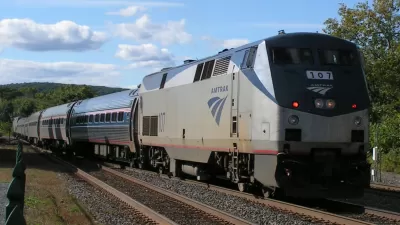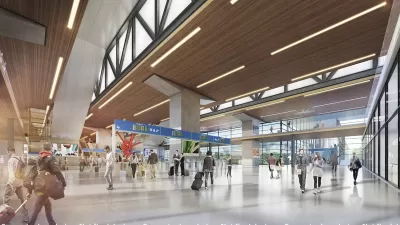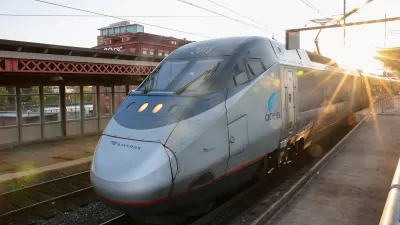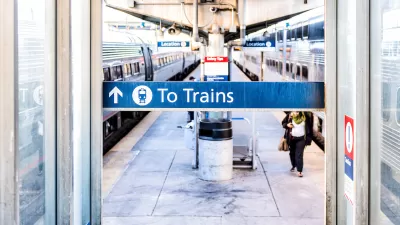In a segment for WNYC, journalist Simon van Zuylen-Wood discusses Amtrak's current status as a "national embarrassment." Decades of lackluster investment, he argues, make it difficult to prove demand in the first place.

Since its establishment in 1971, Amtrak has been a "money-losing ward of the federal government." Politicians eager to cut excess spending frequently target its low ridership, patchy service, and regular delays. Though these criticisms contain some truth, van Zuylen-wood has faith that Amtrak will "muddle through," as it has so many times in the past.
Compared to its analogues in East Asia and Europe, American passenger rail is simply an ineffective way to get around the country. A possible exception is Amtrak's Northeast corridor Acela line, which still pales in comparison to, say, Japan's shinkansen. Throughout the half-hour segment, van Zuylen-Wood covers how this inferiority came to be. Reasons include:
- During the 20th century, rail transport—freight excepted—took on a "collectivist veneer," which also hurt urban light rail.
- The possibly mistaken belief that flying is faster.
- In the United States, passenger trains share track with freight trains, which often monopolize the system.
- It is impossible to prove demand for passenger rail with no adequate initial investment.
- Other national governments see passenger rail as necessary infrastructure (how we view roads and highways) and do not demand profitability.
FULL STORY: The "Embarrassment" of Amtrak

Alabama: Trump Terminates Settlements for Black Communities Harmed By Raw Sewage
Trump deemed the landmark civil rights agreement “illegal DEI and environmental justice policy.”

Study: Maui’s Plan to Convert Vacation Rentals to Long-Term Housing Could Cause Nearly $1 Billion Economic Loss
The plan would reduce visitor accommodation by 25% resulting in 1,900 jobs lost.

Planetizen Federal Action Tracker
A weekly monitor of how Trump’s orders and actions are impacting planners and planning in America.

This Toronto Suburb Has More Bus Riders Than Columbus, Ohio
Brampton, Ontario used gradual improvements in service to prove that if you build it, they will ride.

Paris Bike Boom Leads to Steep Drop in Air Pollution
The French city’s air quality has improved dramatically in the past 20 years, coinciding with a growth in cycling.

Why Housing Costs More to Build in California Than in Texas
Hard costs like labor and materials combined with ‘soft’ costs such as permitting make building in the San Francisco Bay Area almost three times as costly as in Texas cities.
Urban Design for Planners 1: Software Tools
This six-course series explores essential urban design concepts using open source software and equips planners with the tools they need to participate fully in the urban design process.
Planning for Universal Design
Learn the tools for implementing Universal Design in planning regulations.
Smith Gee Studio
Alamo Area Metropolitan Planning Organization
City of Santa Clarita
Institute for Housing and Urban Development Studies (IHS)
City of Grandview
Harvard GSD Executive Education
Toledo-Lucas County Plan Commissions
Salt Lake City
NYU Wagner Graduate School of Public Service





























